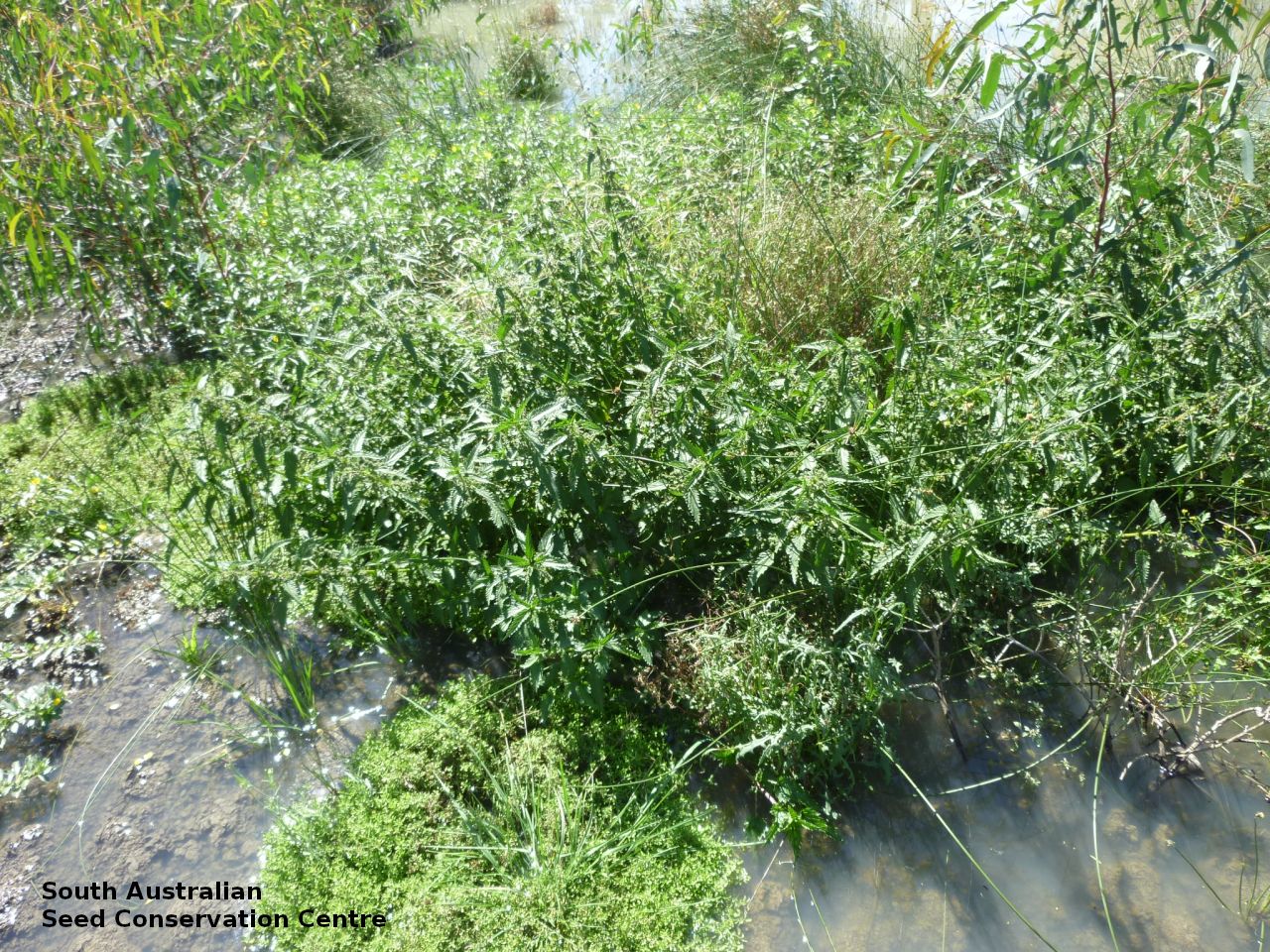
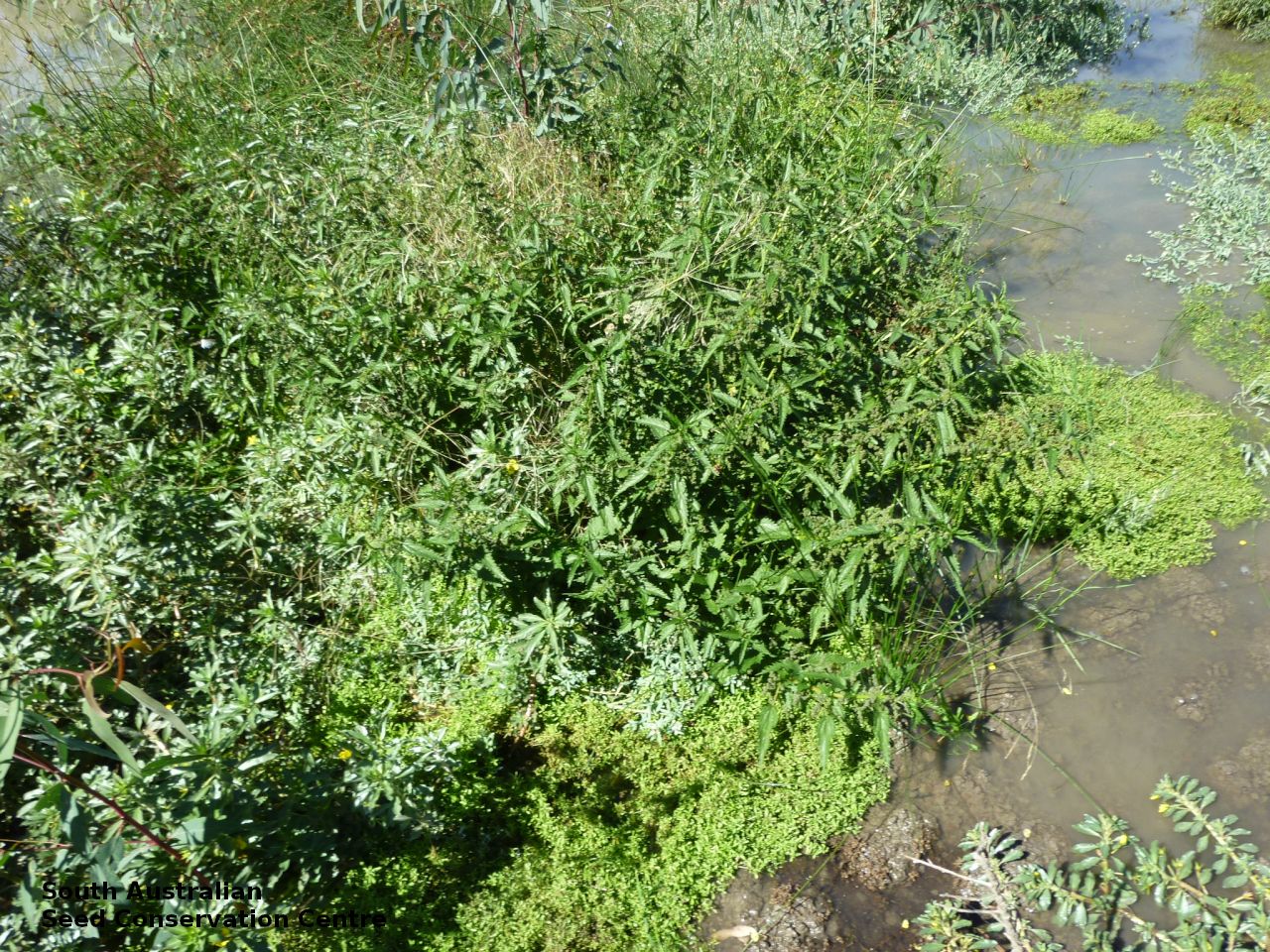
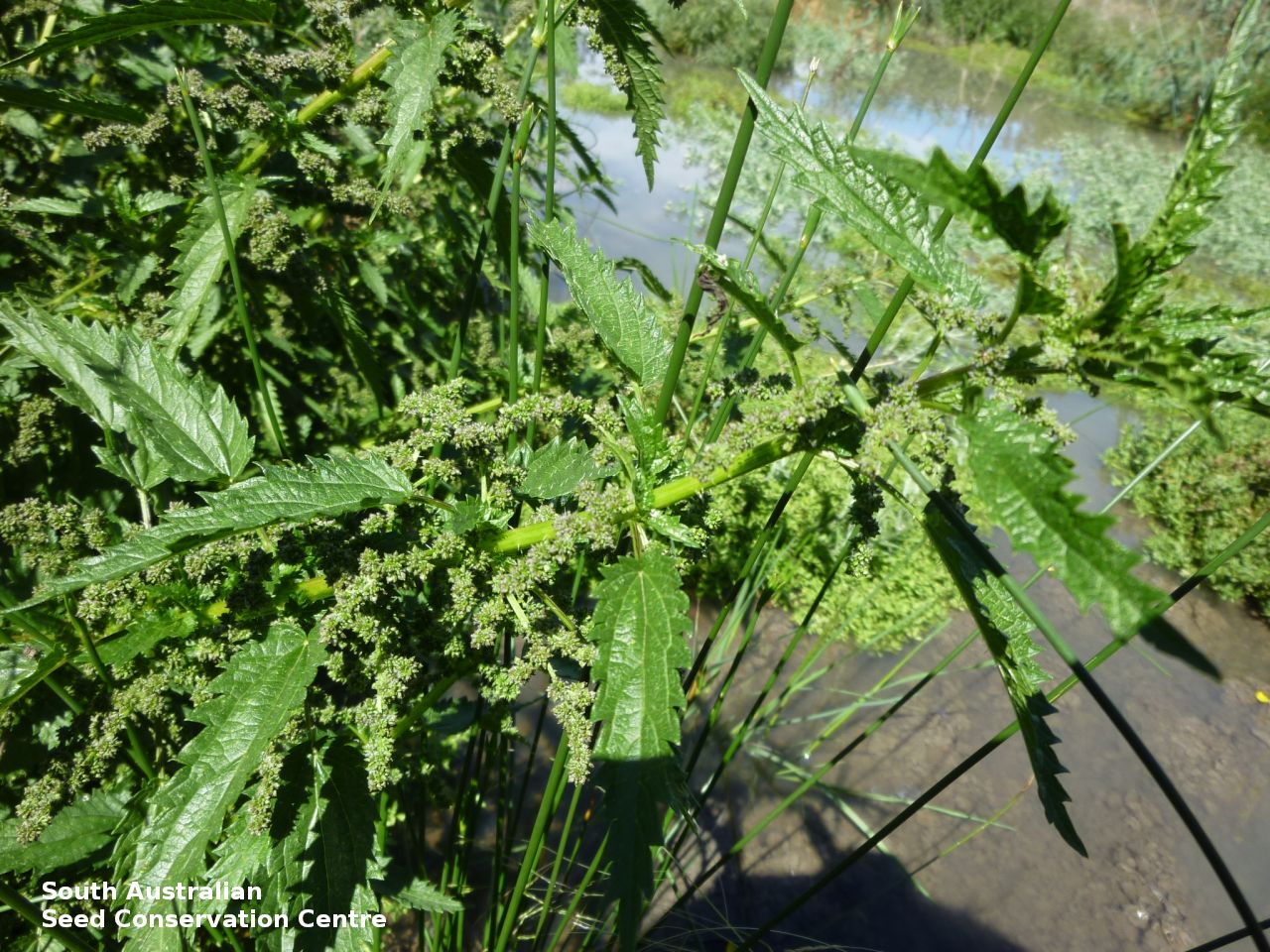
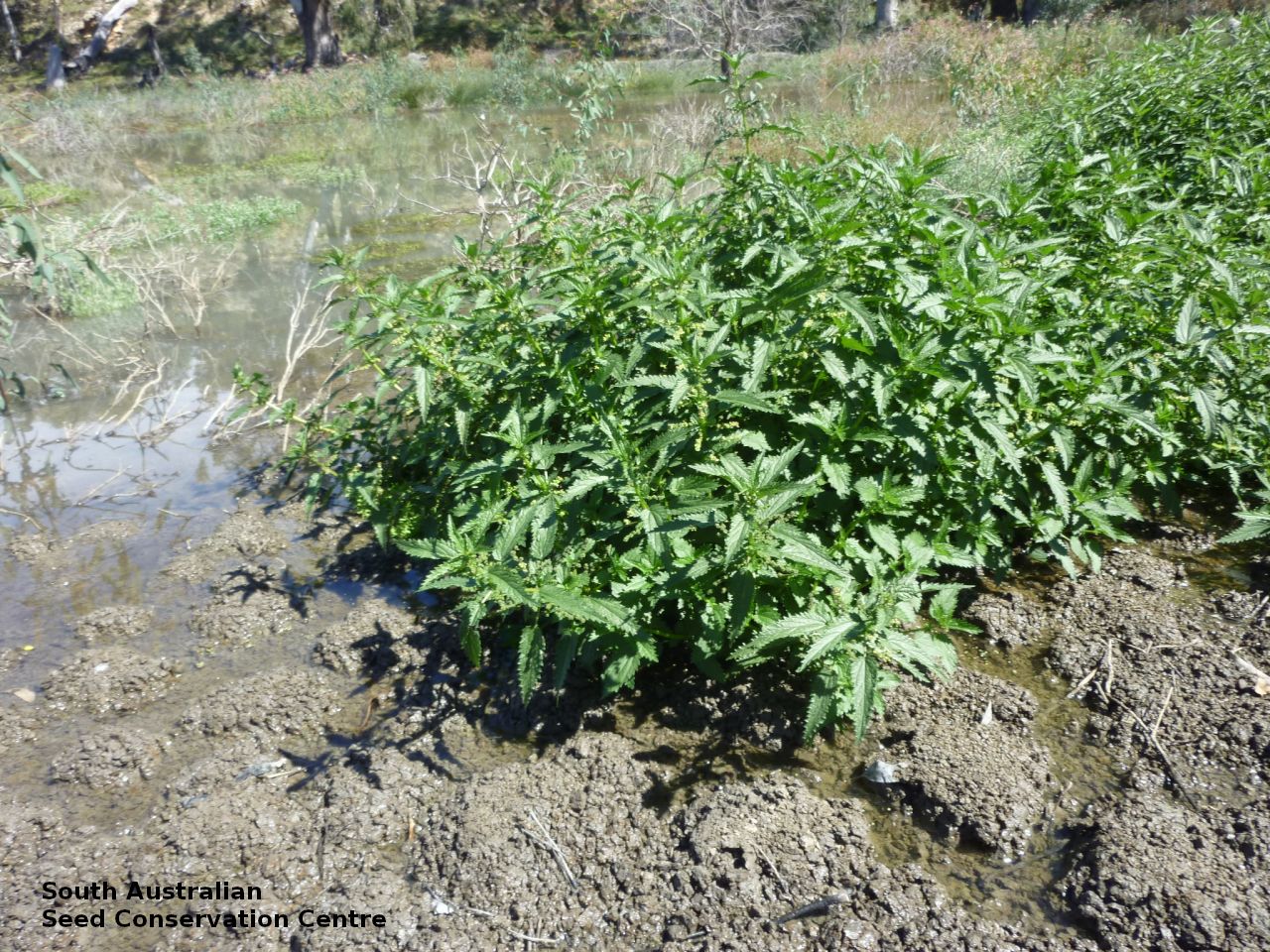
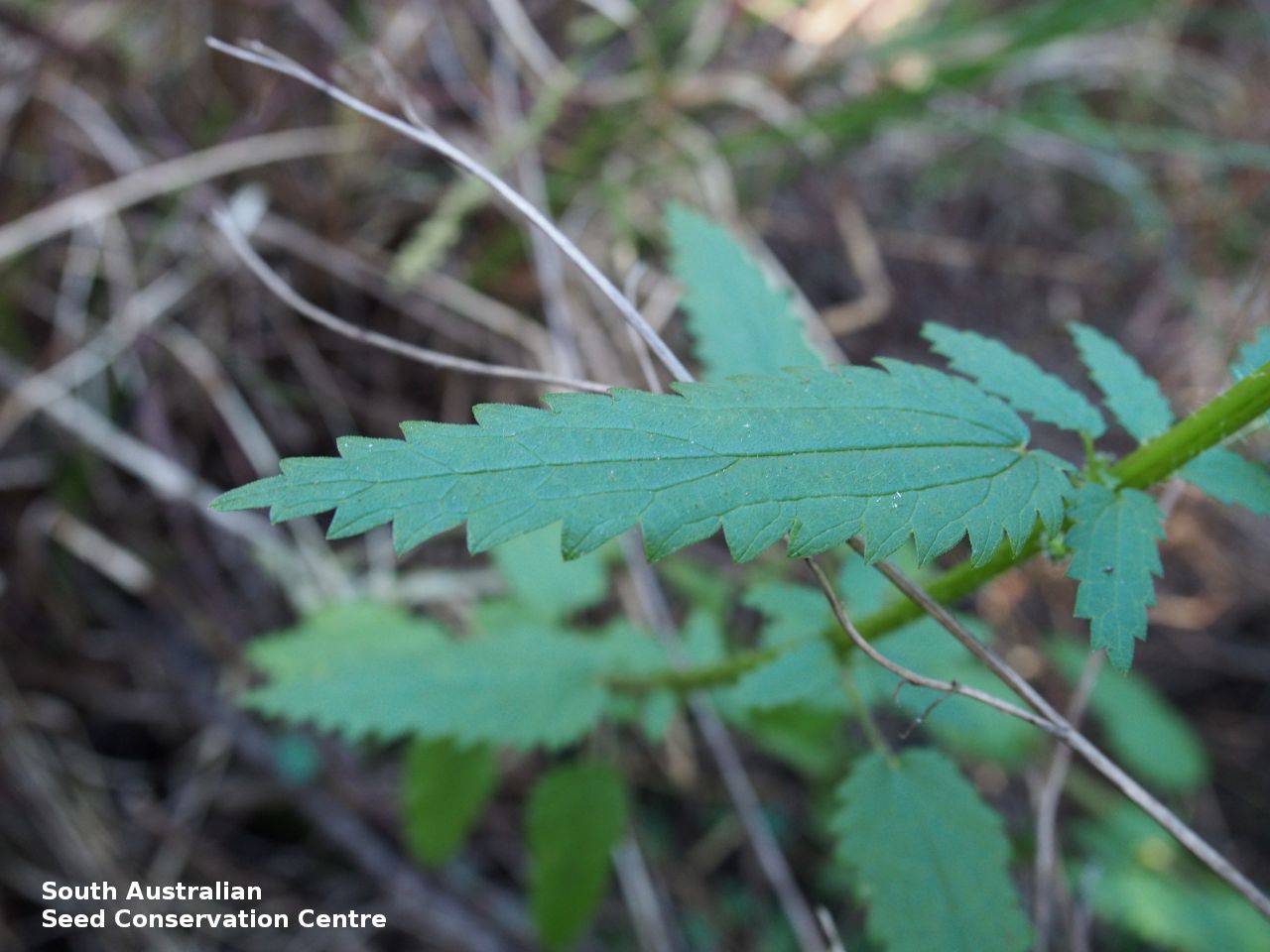
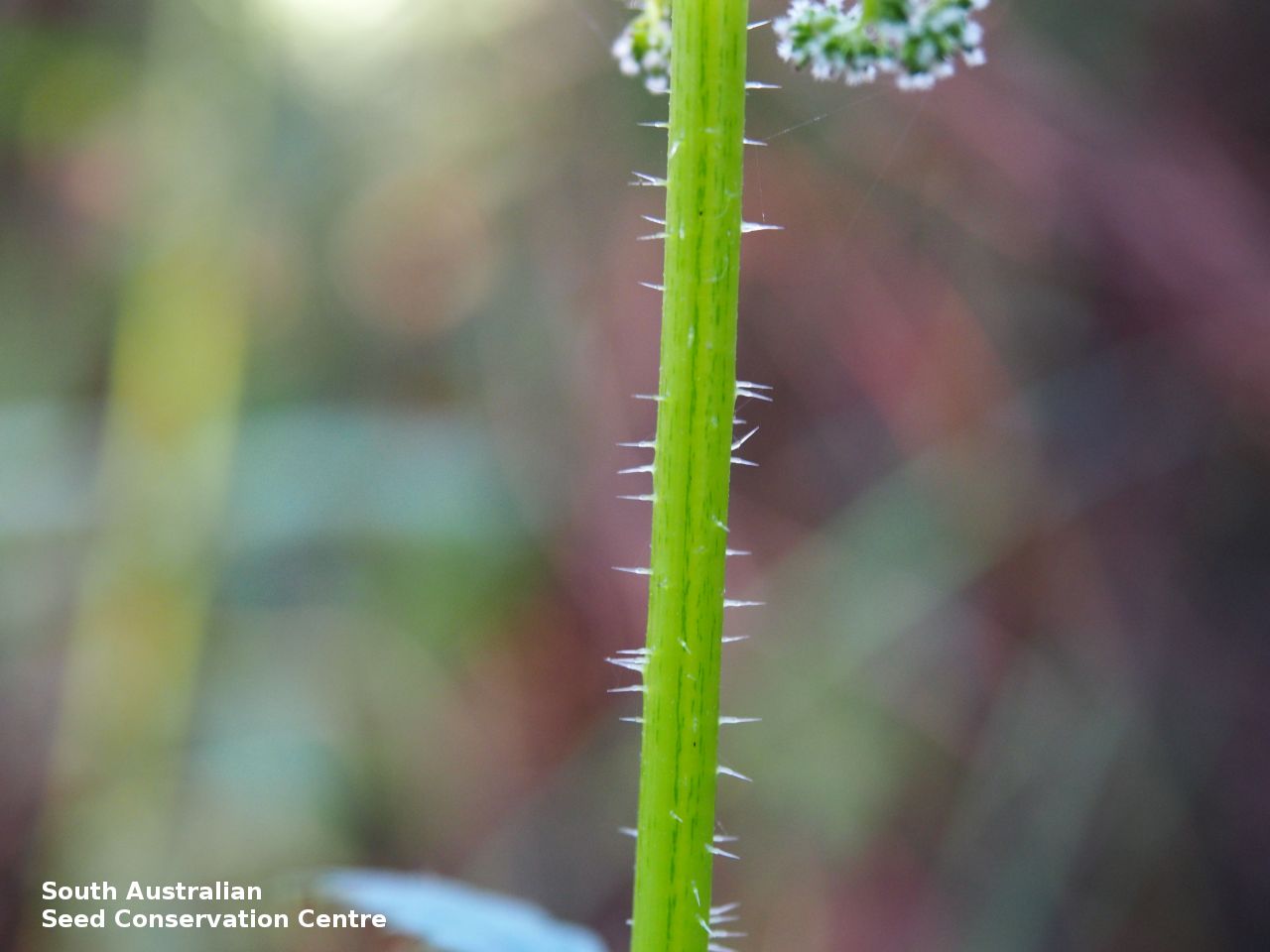
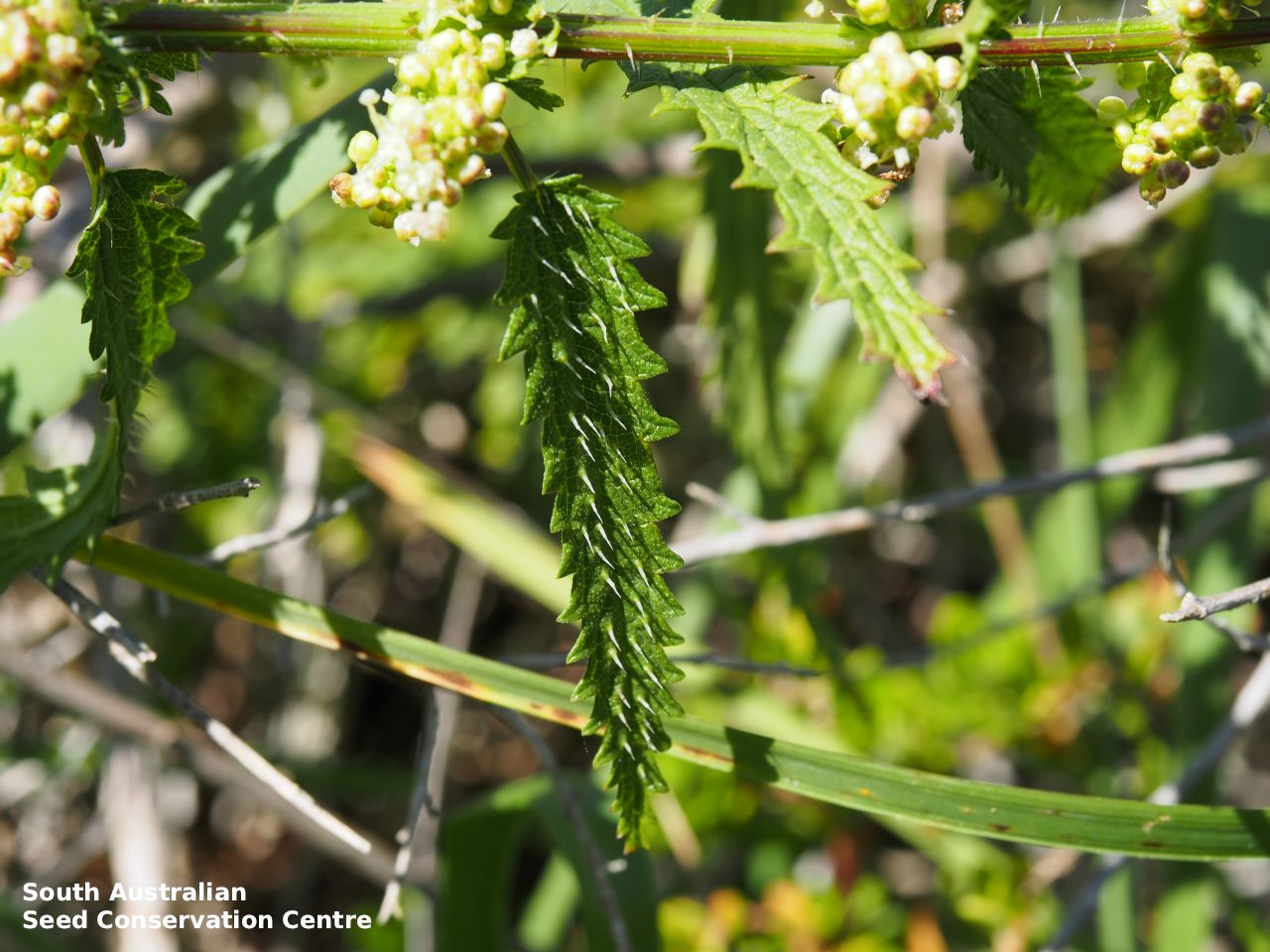
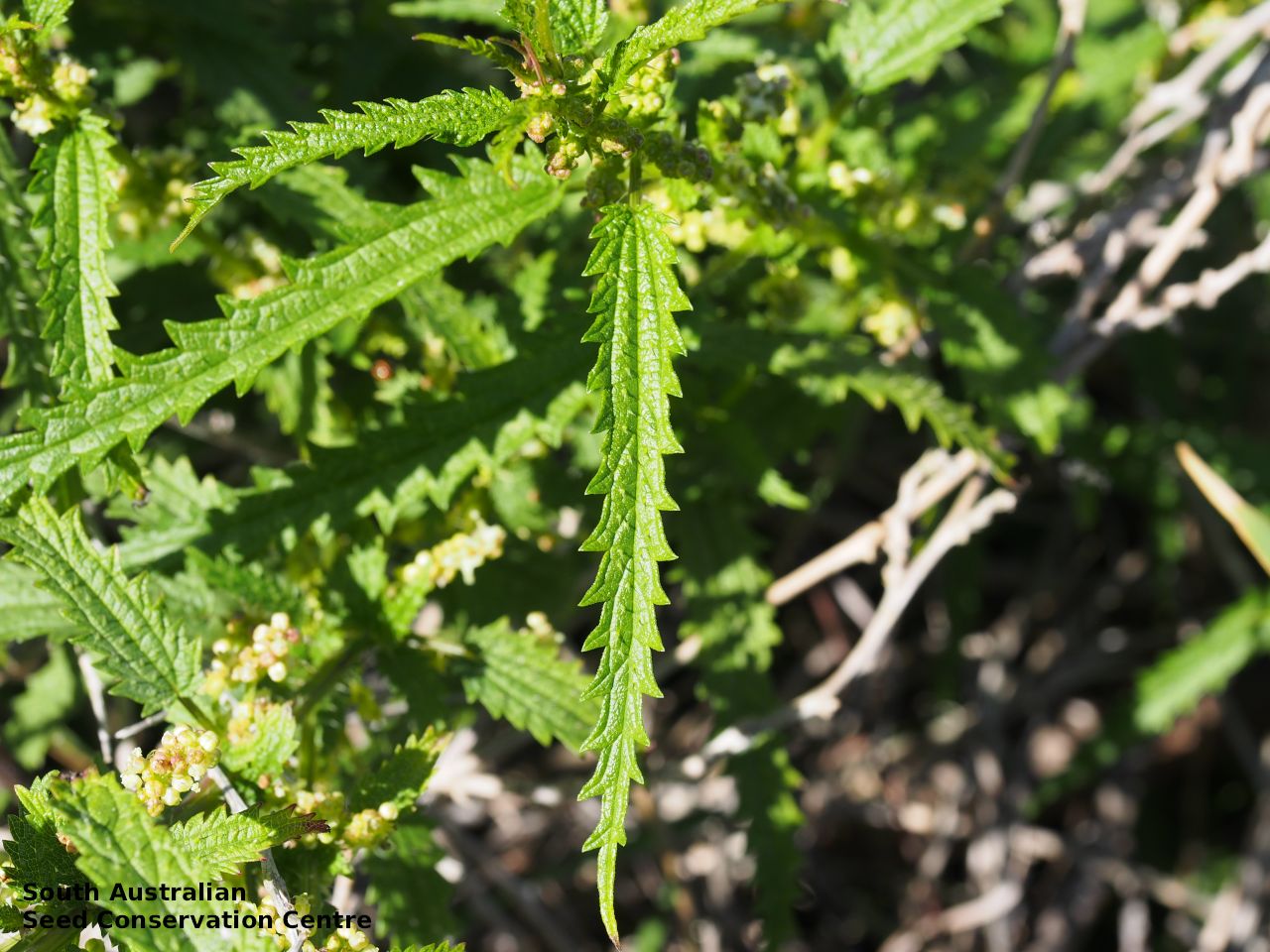
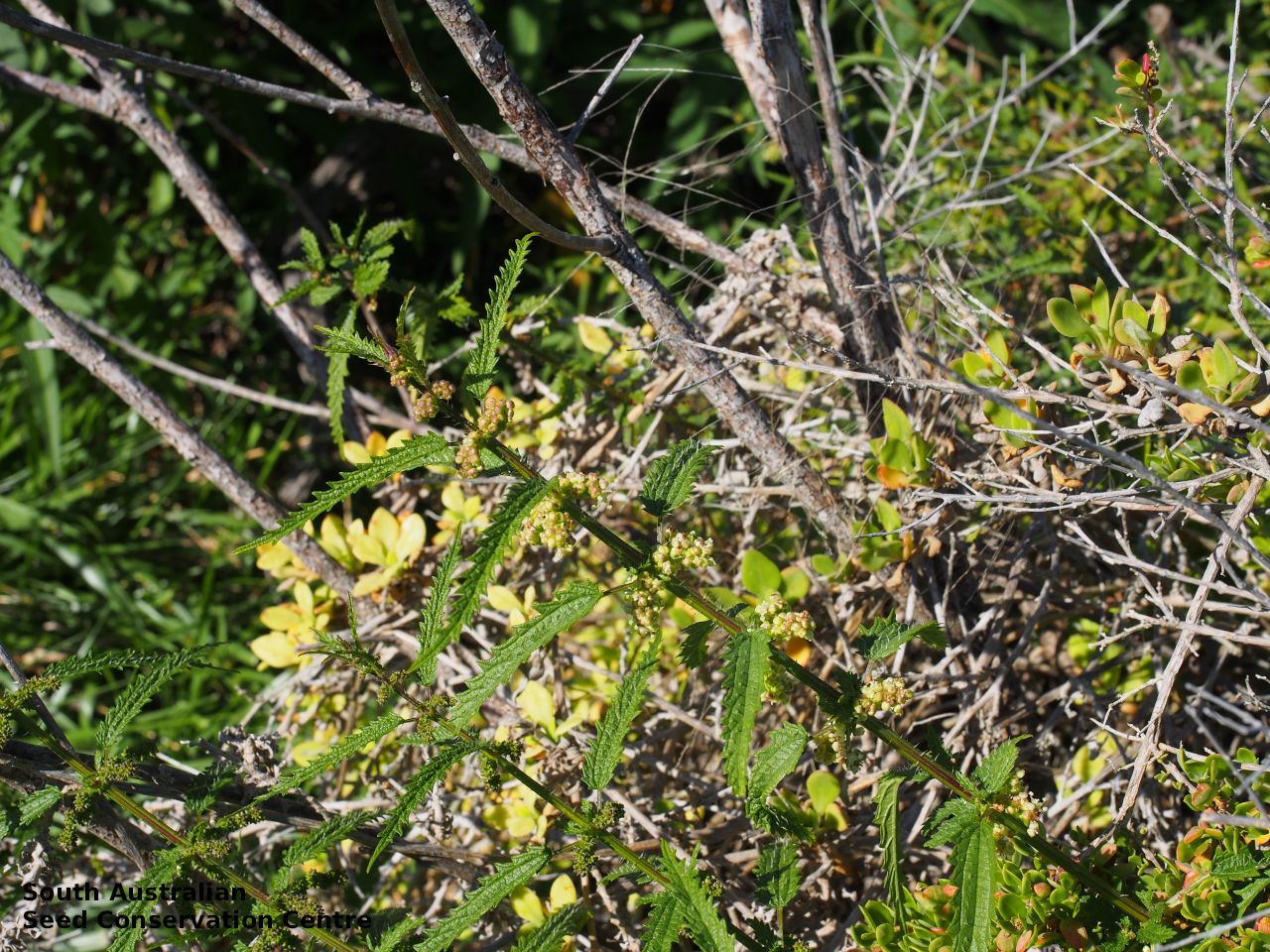
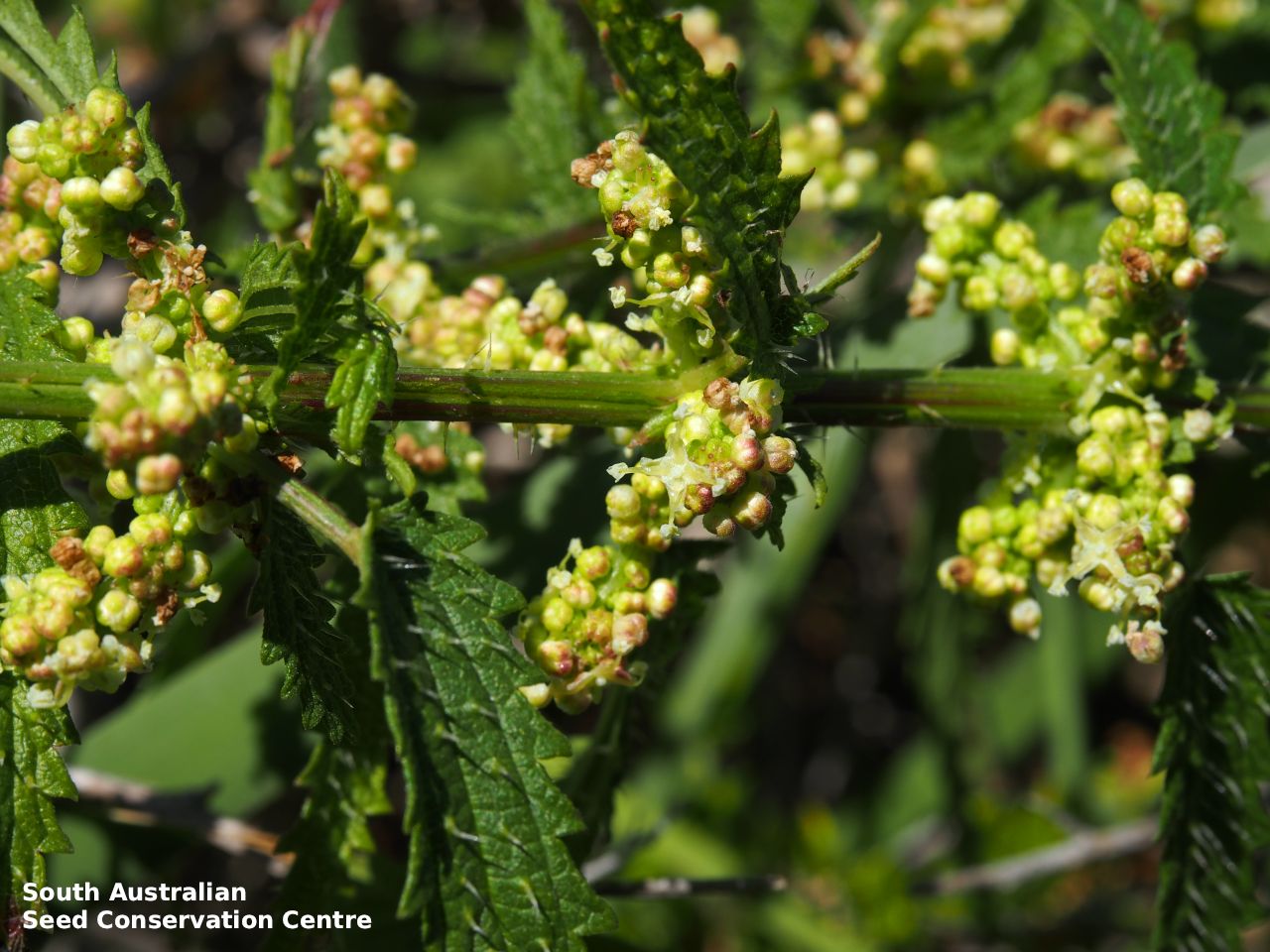
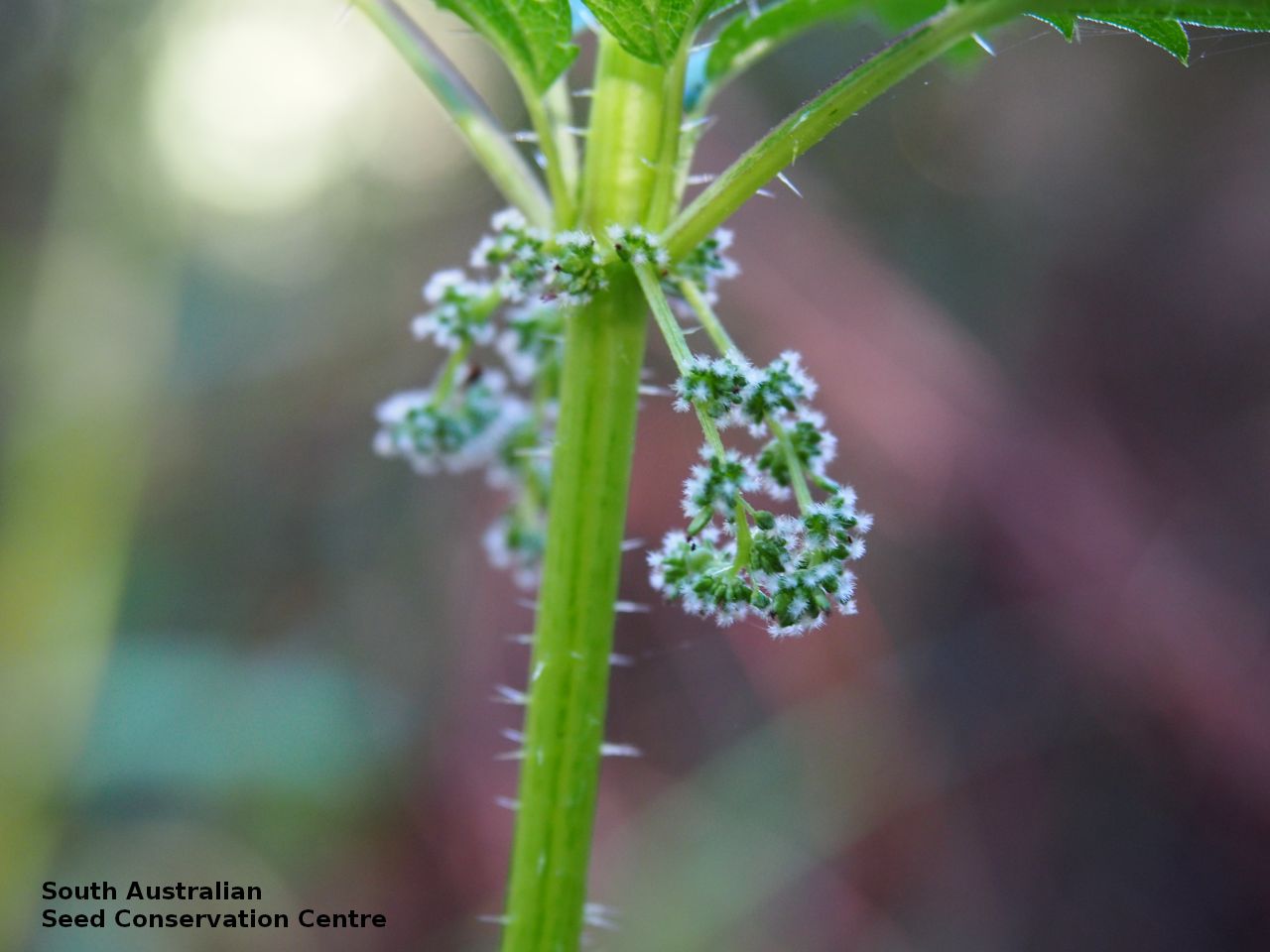
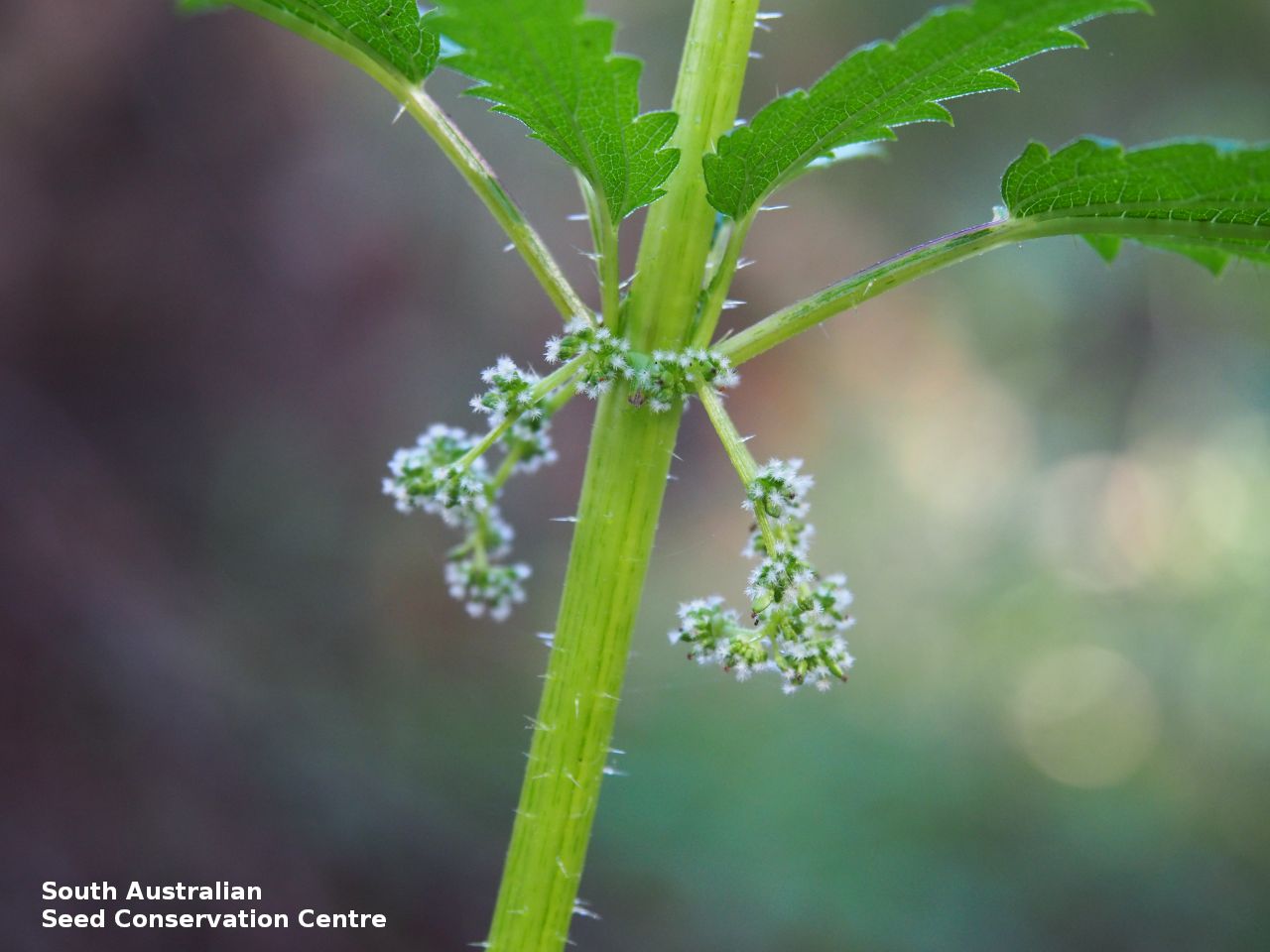
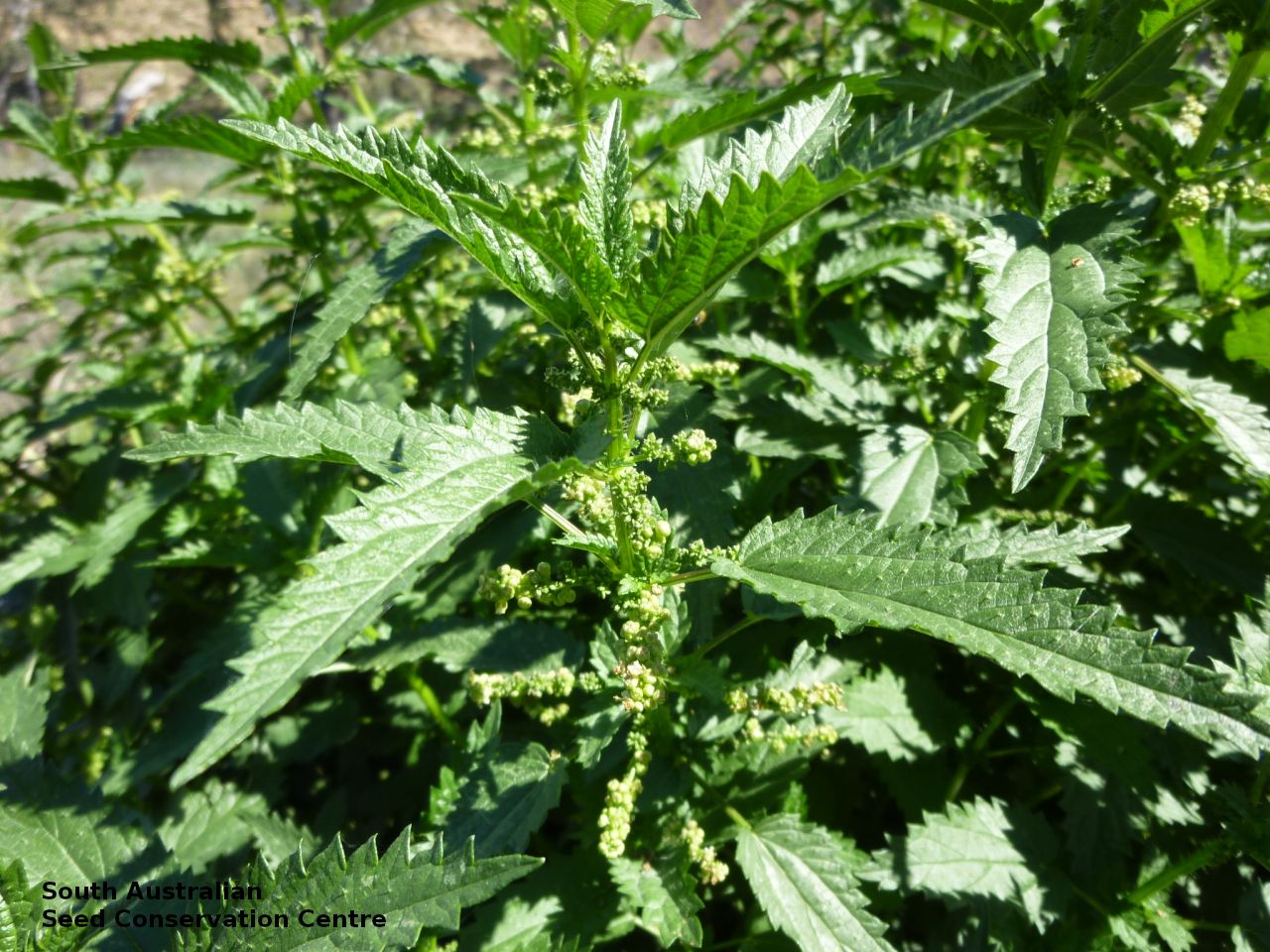
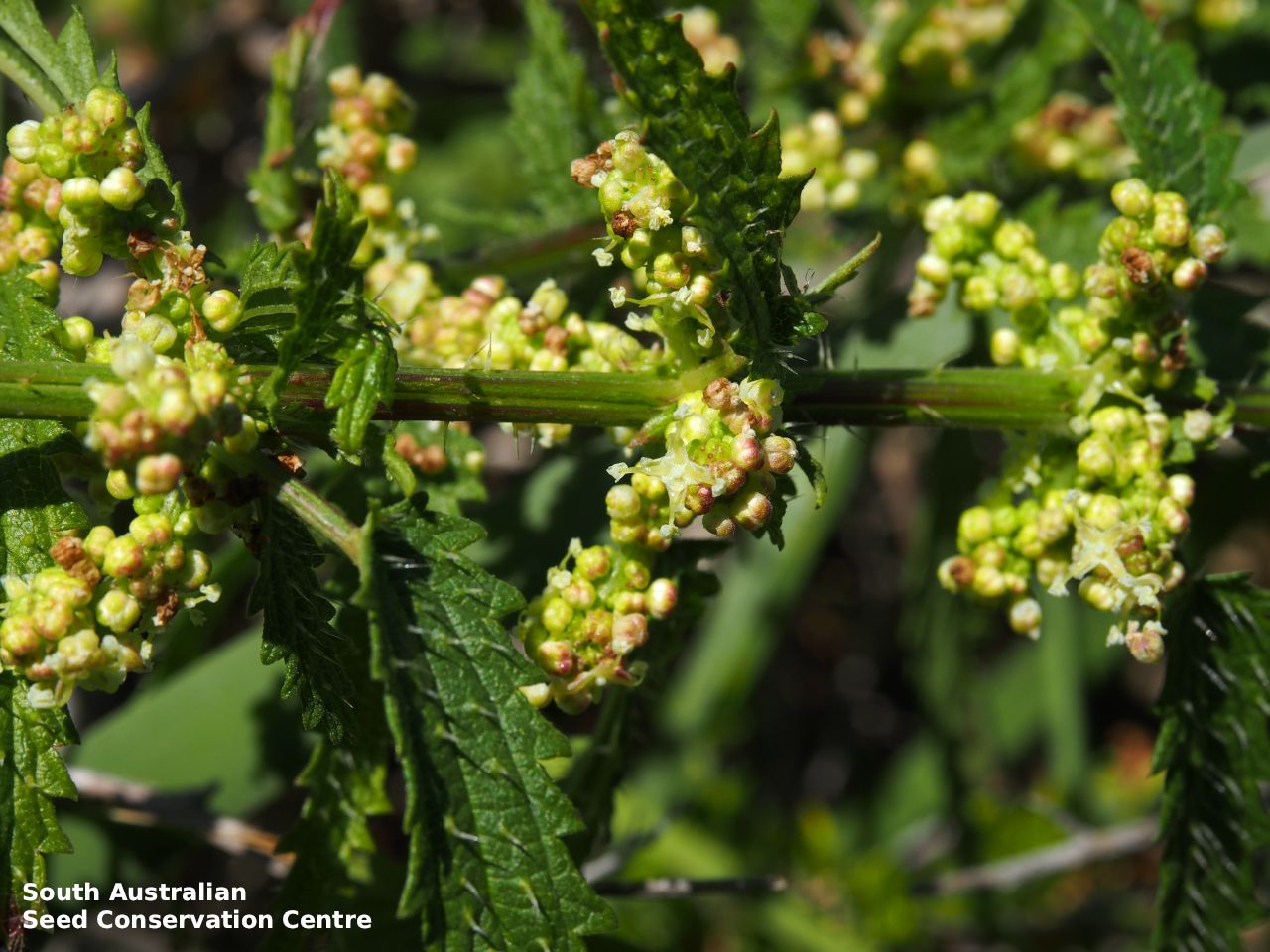
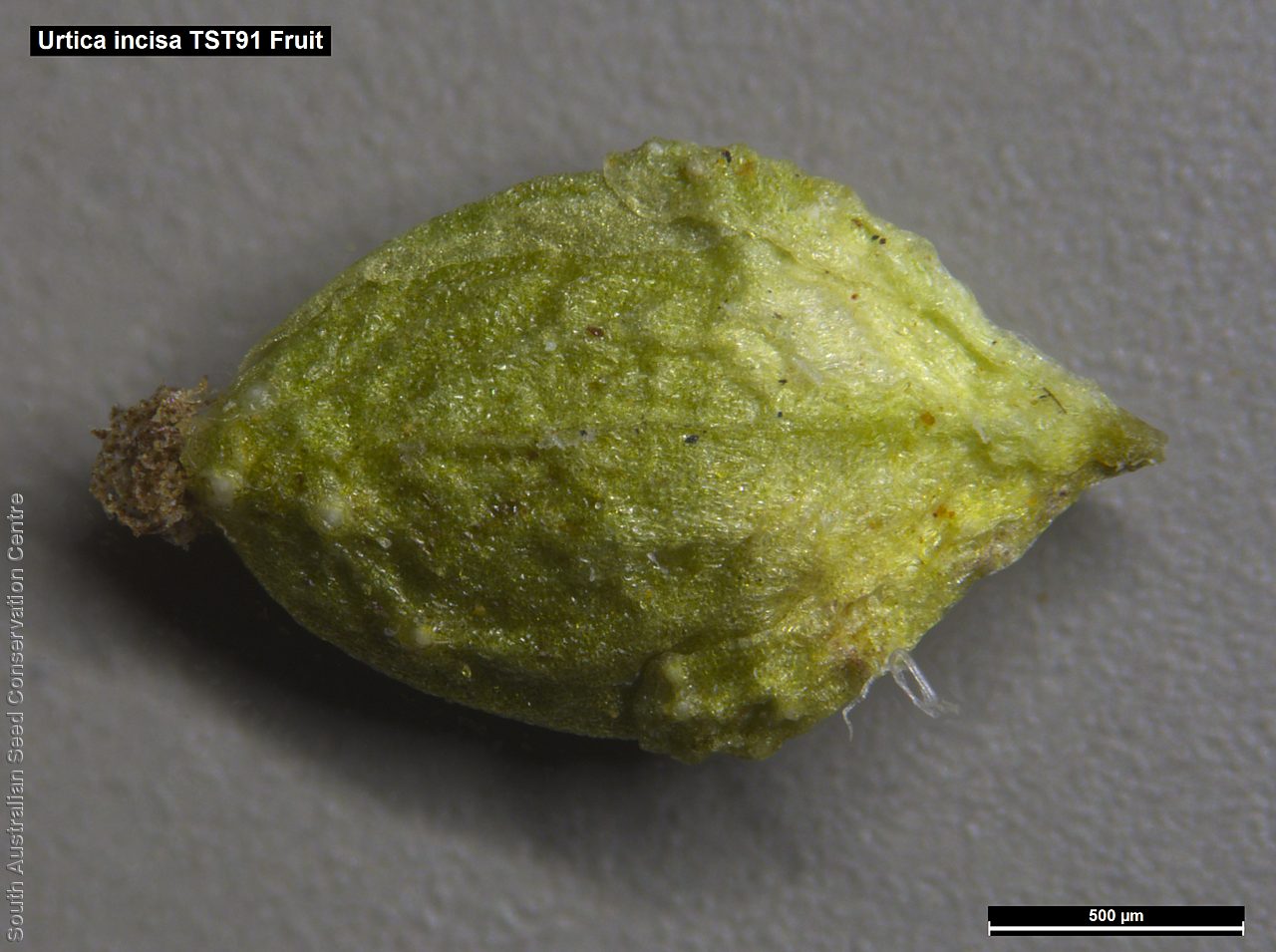
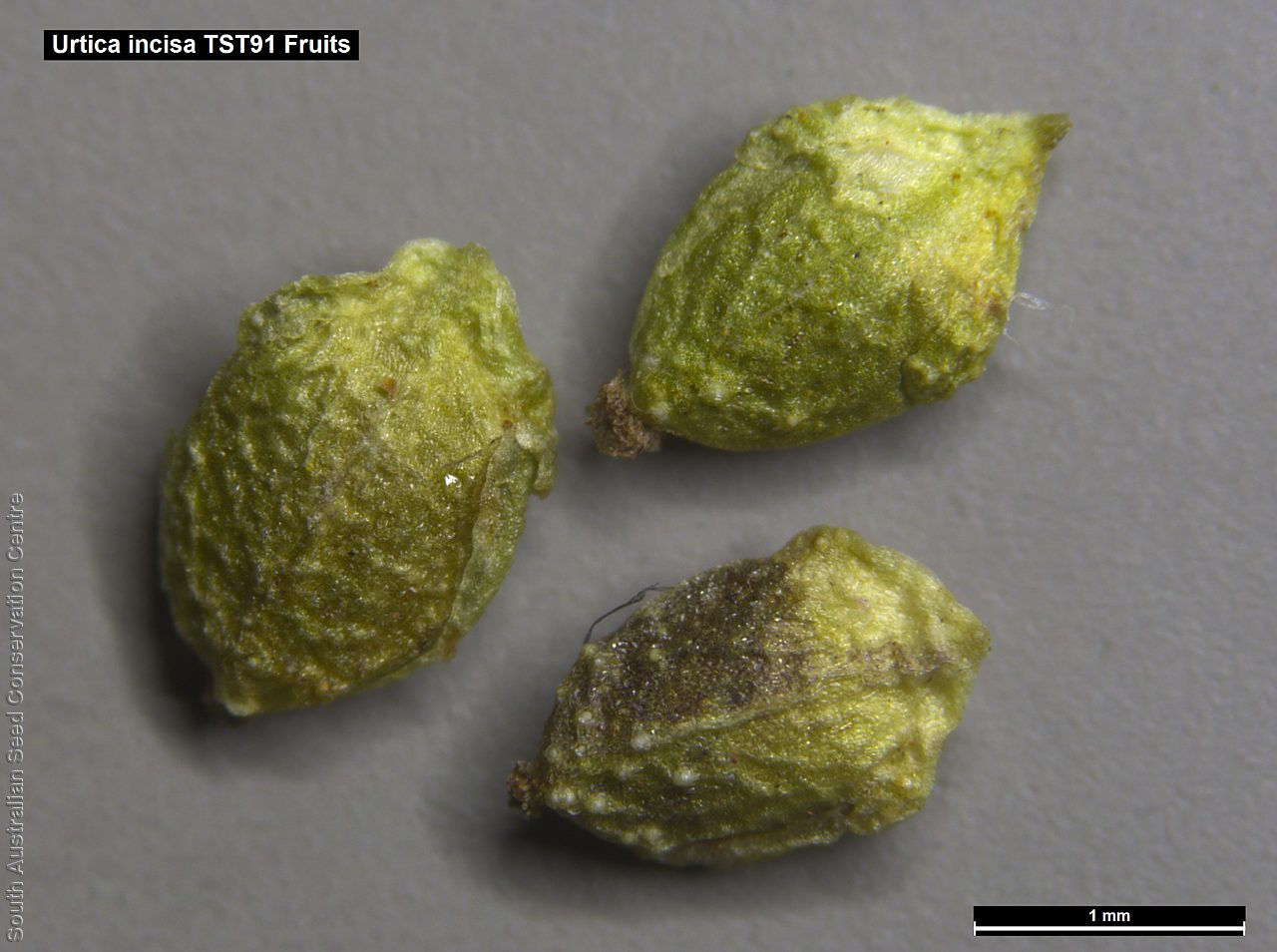
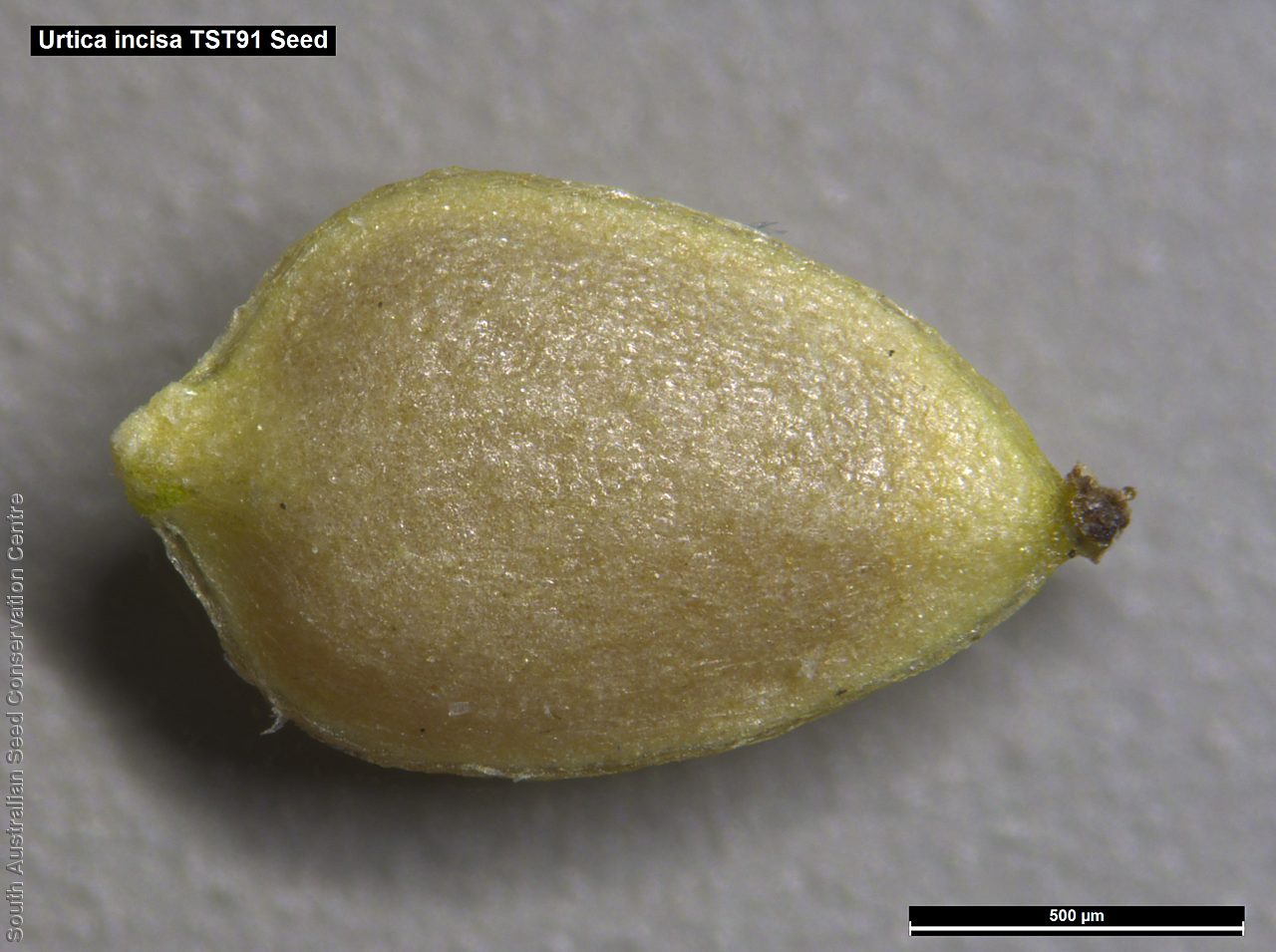
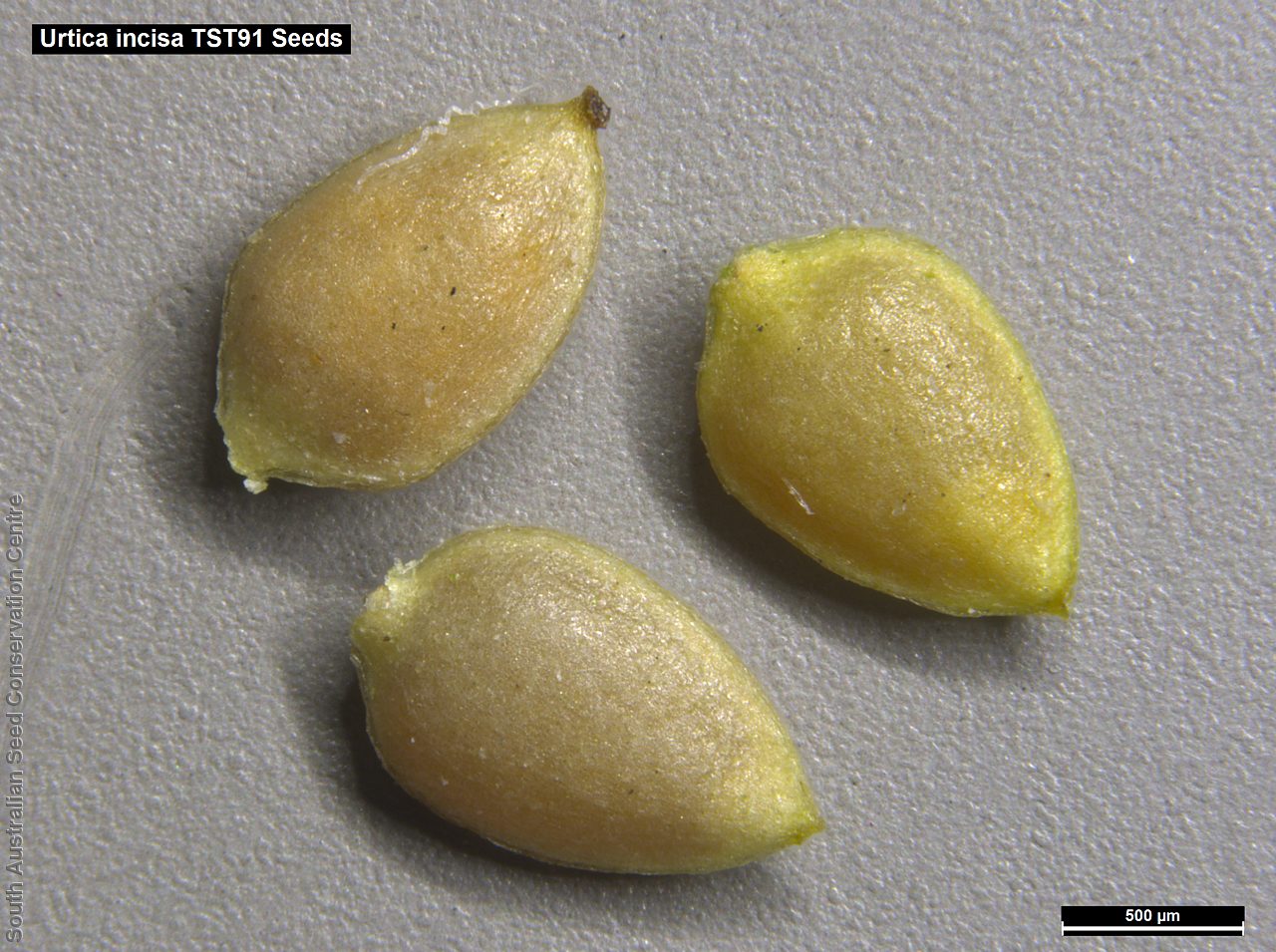

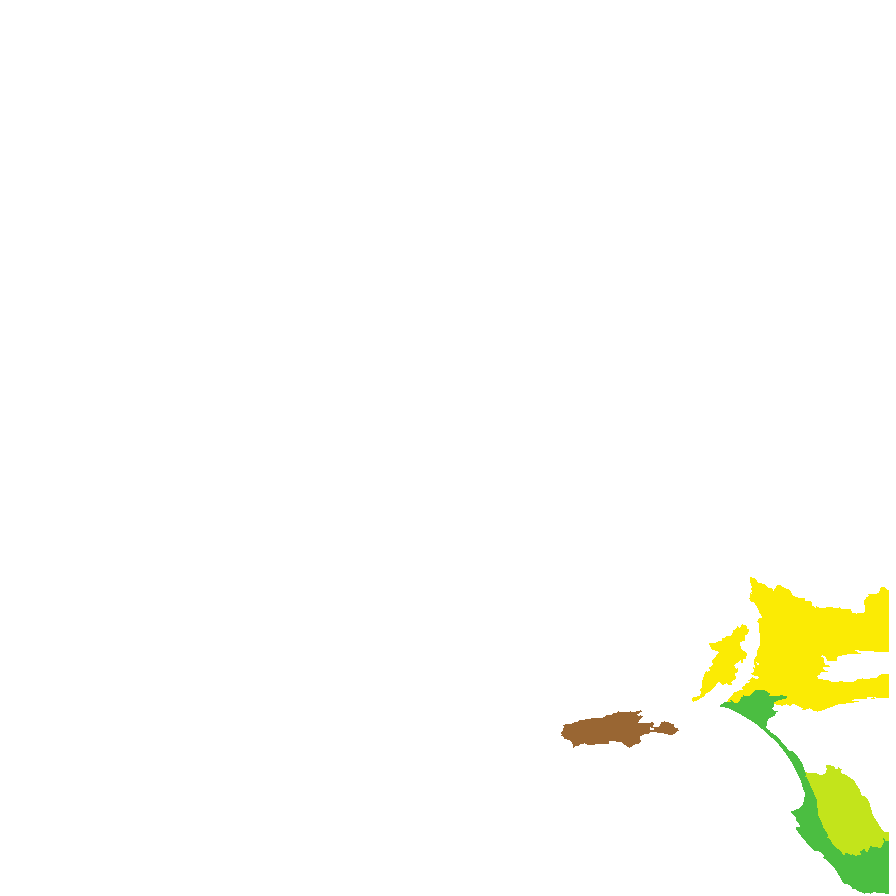
Botanical art
Common names
Native Nettle
Scrub Nettle
Etymology
Urtica a Latin name for the nettle, from the Latin 'urere' meaning to burn; alluding to the burning sensation cause by the rigid stinging hairs which contain an irritating fluid. Incisa from the Latin 'incidere' meaning incised or cut in two; referring to the incised leaf.
Distribution and status
Found in the southern part of South Australia, growing on margins and in clearings within wet open-forests, swamps and streams. Also found in all states except the Northern Territory. Native. Uncommon in South Australia. Rare in Western Australia. Common in the other states.
Herbarium regions: Murray, Southern Lofty, Kangaroo Island, South Eastern, Green Adelaide
NRM regions: Adelaide and Mount Lofty Ranges, Kangaroo Island, South Australian Murray-Darling Basin, South East
AVH map: SA distribution map (external link)
Plant description
Monoecious perennial herb to 100 cm high, leaves and stems (except for very young tips) glabrous or nearly so between the scattered stinging hairs. Leaves lanceolate, narrowly ovate or triangular (sometimes broadly ovate), base truncate to cordate, margins broadly toothed to incised, finely hairy, apex acute to tail-like, leaf blade to 12 cm long and 7 cm wide' leaf stalk usually more than half as long as leaf blade. Flowers usually dioecious and where monoecious the male and female flowers in separate clusters and not mixed, with tiny white flowers. Flowers throughout the year. Fruits are pale yellow-brown fruit clusters along the spike. Seeds are yellowish brown ovoid seed to 2 mm long and 1.1 mm wide.
Seed collection and propagation
Collect seeds between January and December. Collect seeds that are turning pale yellowish brown by running your hand along the fruit spike. Mature seeds should come off easily. Be careful when collecting as the leaves and stems have rigid hairs that will cause a burning sensation. Place the seeds in a tray and leave to dry for one to two weeks. Then rub the seeds with a rubber bung to dislodge the seeds. Use a sieve to separate any unwanted material. Seeds are light brown and hard. Store the seeds with a desiccant such as dried silica beads or dry rice, in an air tight container in a cool and dry place. From one collection, the seed viability was high, at 85%.
| Location | No. of seeds (weight grams) | Number of plants | Date collected | Collection number Collection location | Date stored | % Viability | Storage temperature |
|---|---|---|---|---|---|---|---|
| BGA MSB | 4,100 (1.86 g) 4,100 (1.86 g) | 30 | 13-Dec-2006 | TST91 Kangaroo Island | 1-Aug-2007 | 85% | -18°C |
Number of plants: This is the number of plants from which the seeds were collected.
Collection location: The Herbarium of South Australia's region name.
% Viability: Percentage of filled healthy seeds determined by a cut test or x-ray.